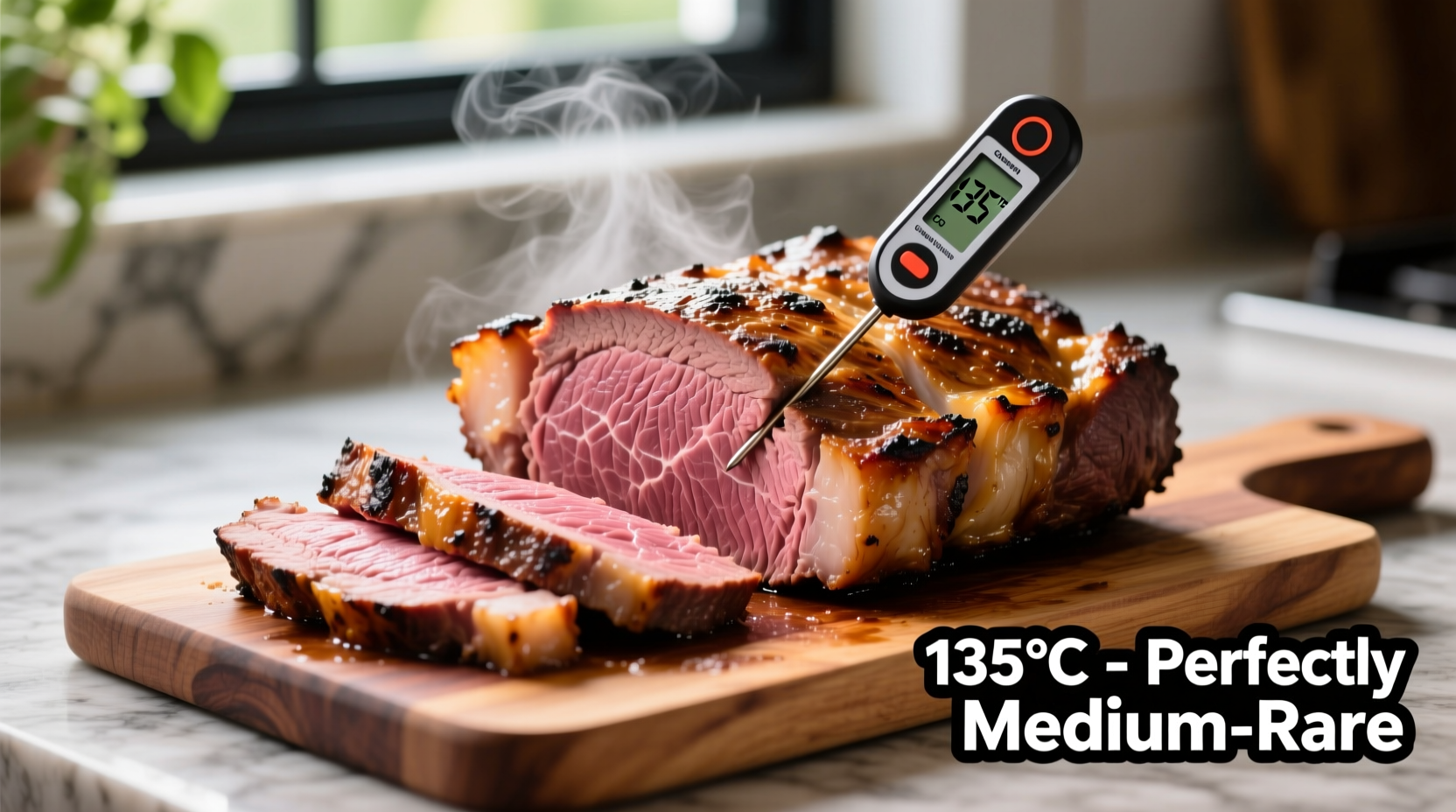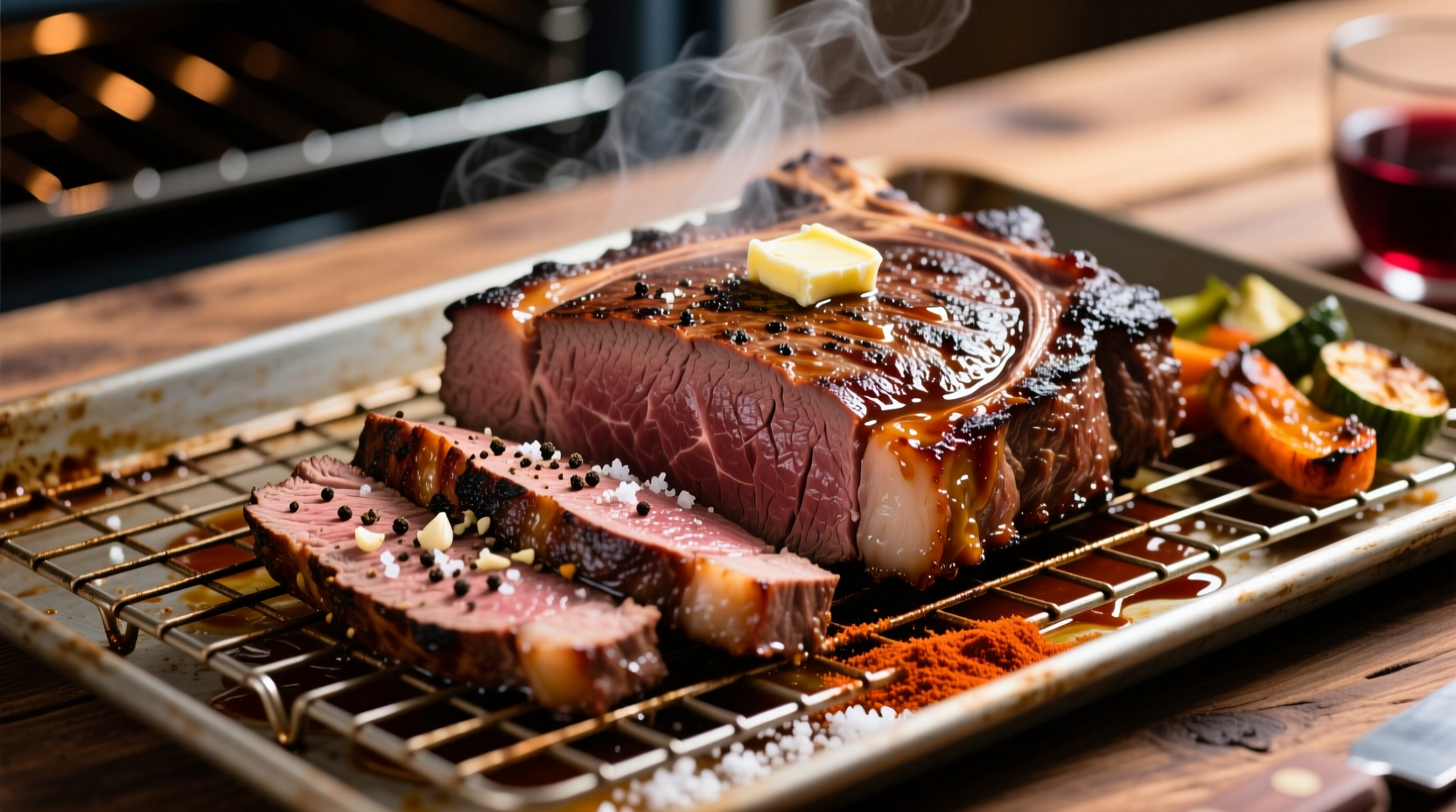Mastering the perfect oven-cooked tri tip at 275°F transforms this affordable cut into a restaurant-quality meal. This guide delivers precise timing, science-backed techniques, and pro tips that ensure juicy, flavorful results every time—no guesswork required.
Why 275°F Is the Sweet Spot for Tri Tip
Cooking tri tip at 275°F creates the ideal balance between slow, even heat penetration and reasonable cooking time. This low-and-slow approach:
- Prevents the exterior from overcooking before the interior reaches target temperature
- Allows connective tissues to gradually break down without drying the meat
- Creates a beautiful crust while maintaining pink, juicy interior
Pre-Cooking Essentials: Setting Up for Success
Proper preparation directly impacts your final cooking time and results. Follow these critical steps:
Temperature Equilibrium
Remove tri tip from refrigerator 60-90 minutes before cooking. Bringing meat to 50-60°F internal temperature:
- Reduces total cooking time by 15-20%
- Prevents gray, overcooked bands around the edges
- Creates more even doneness throughout
Seasoning Strategy
Apply a thin layer of oil followed by coarse salt (1 teaspoon per pound) at least 45 minutes before cooking. This dry brine process:
- Enhances flavor penetration
- Creates superior crust formation
- Helps stabilize internal temperature rise
| Tri Tip Weight | Approximate Cooking Time at 275°F | Target Internal Temp |
|---|---|---|
| 1.5 lbs | 30-45 minutes | 125-130°F |
| 2 lbs | 40-60 minutes | 125-130°F |
| 2.5 lbs | 50-75 minutes | 125-130°F |
| 3 lbs | 60-90 minutes | 125-130°F |
Note: These times assume meat starts at room temperature (55-65°F). Add 10-15 minutes if cooking straight from refrigerator.
The Cooking Process: Timing and Monitoring
Accurate timing requires understanding these critical phases:
Phase 1: Oven Setup and Initial Cooking (0-20 minutes)
- Preheat oven to 275°F with rack positioned in center
- Place tri tip on wire rack over baking sheet (fat side up)
- Insert probe thermometer into thickest part
- First 20 minutes establish cooking rhythm without significant temperature rise
Phase 2: Active Cooking (20 minutes until target)
Temperature rises steadily at approximately 5-8°F every 10 minutes. Monitor these indicators:
- 120°F internal: Medium-rare target (remove 5°F before final temp)
- 130°F internal: Medium target
- Surface appearance: Deep brown crust forming
- Texture: Firm but yielding when pressed
Phase 3: The Critical Resting Period
Remove tri tip when thermometer reads 5-7°F below desired final temperature. Resting time is non-negotiable:
- Cover loosely with foil
- Rest 12-15 minutes minimum (up to 20 minutes for larger cuts)
- Internal temperature will rise 5-10°F during rest
- Juices redistribute for maximum tenderness

Doneness Verification: Beyond the Clock
While timing provides a framework, these verification methods ensure perfect results:
Thermometer Method (Most Accurate)
USDA Food Safety and Inspection Service recommends these safe internal temperatures for beef:
- Rare: 120-125°F (remove at 115°F)
- Medium-rare: 130-135°F (remove at 125°F)
- Medium: 140-145°F (remove at 135°F)
- Medium-well: 150°F+ (not recommended for tri tip)
Touch Test (Backup Method)
Compare firmness to these hand references:
- Rare: Like base of thumb when hand relaxed
- Medium-rare: Like base of thumb when touching index finger
- Medium: Like base of thumb when touching middle finger
Troubleshooting Common Issues
Address these frequent problems before they ruin your cook:
Problem: Cooking Taking Longer Than Expected
Solutions:
- Verify oven temperature with independent thermometer (many run 25°F low)
- Ensure meat wasn't too cold when starting
- Check thermometer placement (must be in thickest part)
Problem: Uneven Cooking
Solutions:
- Rotate pan 180° halfway through cooking
- Place thicker side toward oven's heat source
- Use a convection setting if available
Pro Tips for Restaurant-Quality Results
Elevate your tri tip with these professional techniques:
- Reverse sear finish: After oven cooking, sear 60-90 seconds per side in 450°F cast iron for perfect crust
- Wood infusion: Add hickory or oak chips to drip pan for subtle smoky flavor
- Carryover cooking: Always remove 5-7°F below target temperature
- Slicing technique: Cut against the grain at 45° angle in ¼-inch slices
When to Adjust Standard Timing
These factors require timing modifications:
- Thick cuts (over 2.5 inches): Add 10-15 minutes total time
- Frozen meat: Not recommended, but if necessary, add 25-30% to cooking time
- Convection ovens: Reduce time by 10-15% or lower temperature by 25°F
- High altitude (above 3,000 ft): Expect slightly longer cooking times











 浙公网安备
33010002000092号
浙公网安备
33010002000092号 浙B2-20120091-4
浙B2-20120091-4